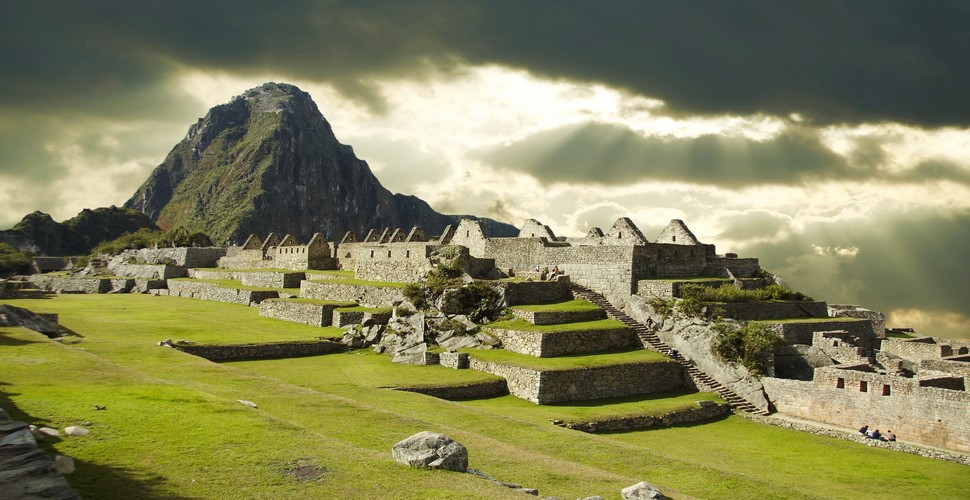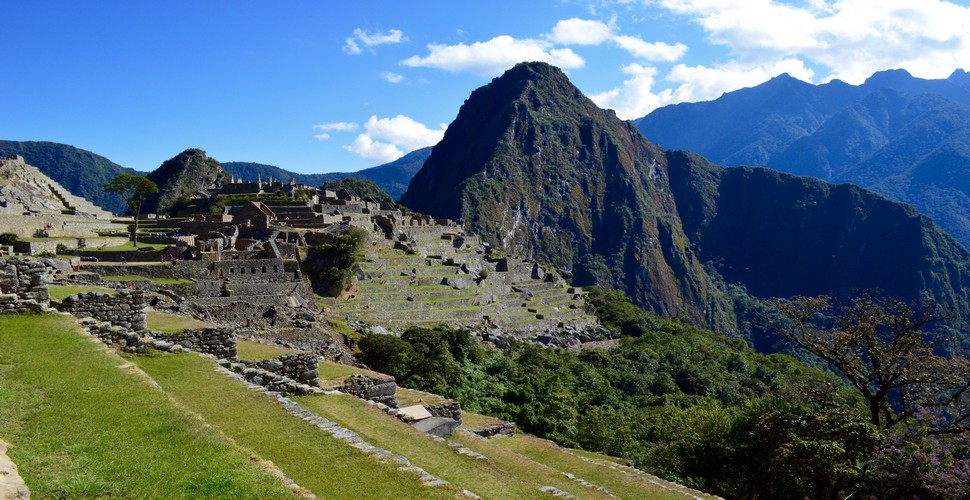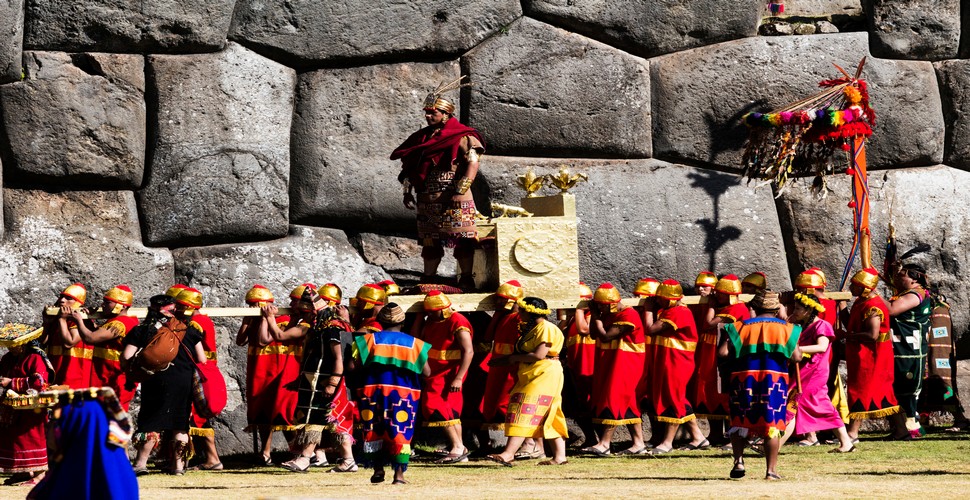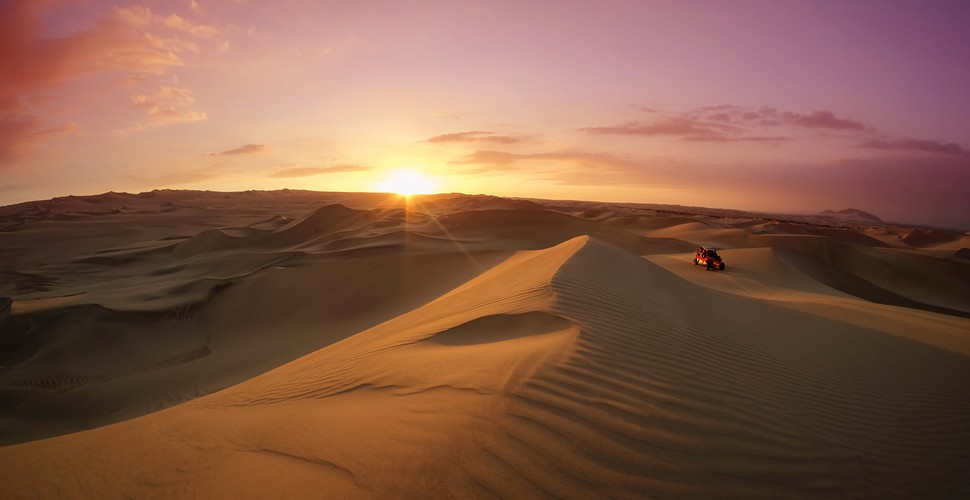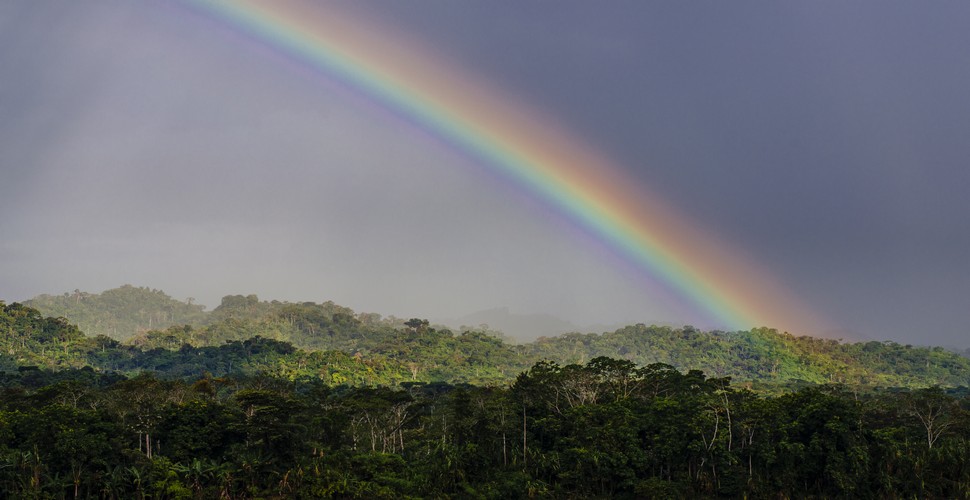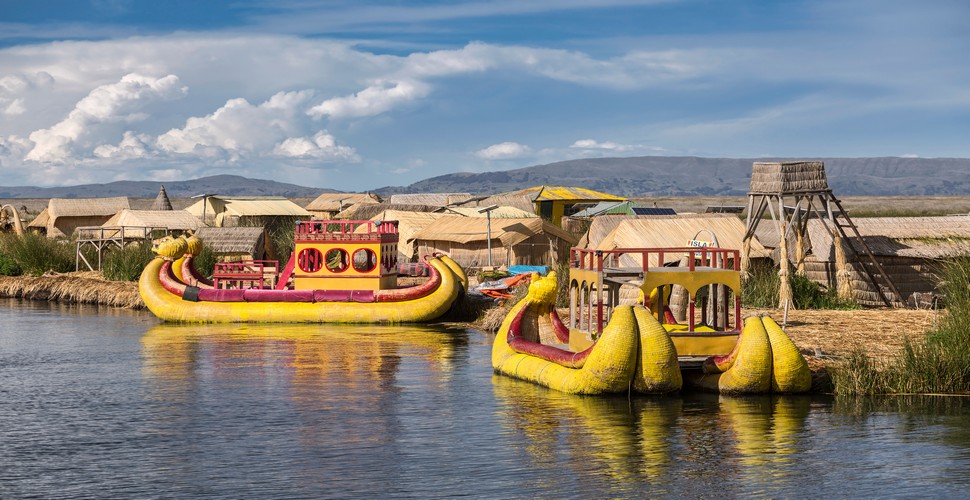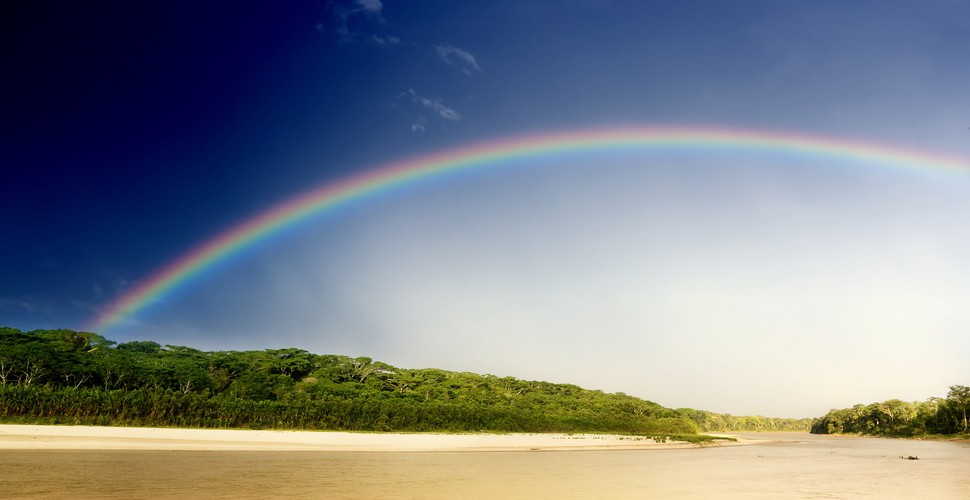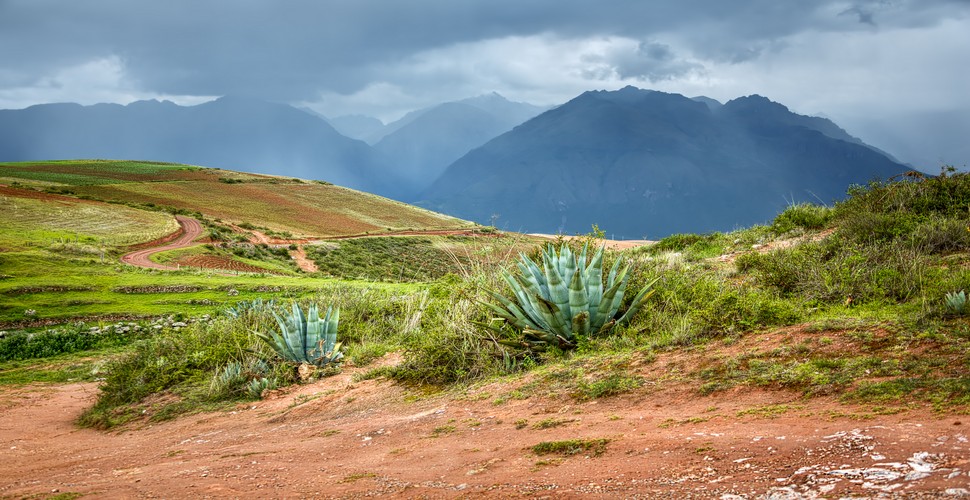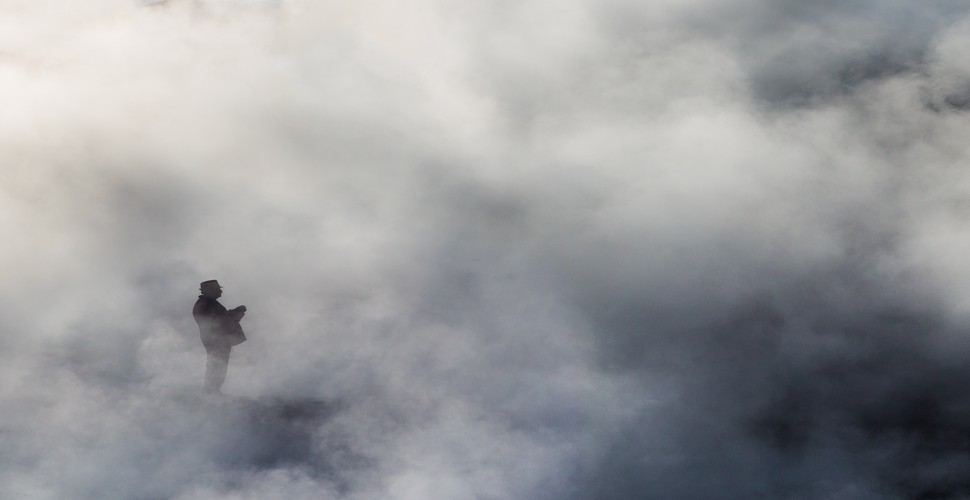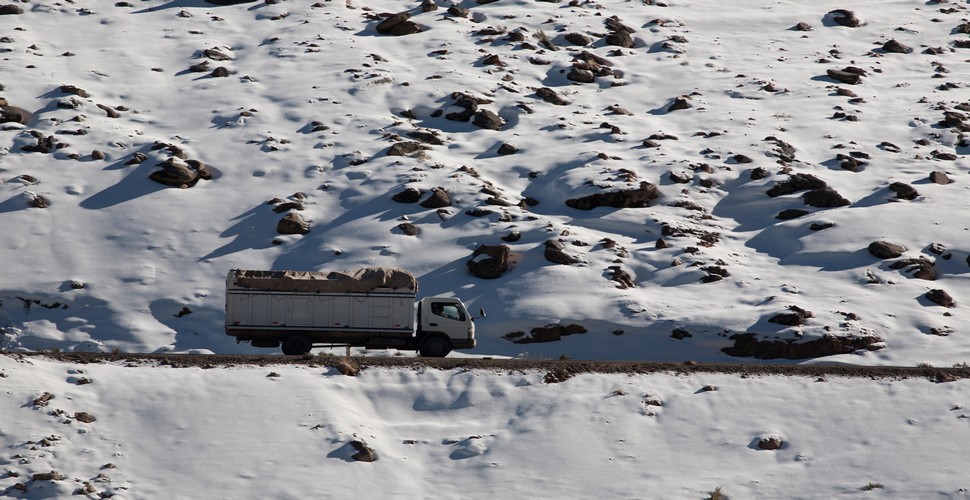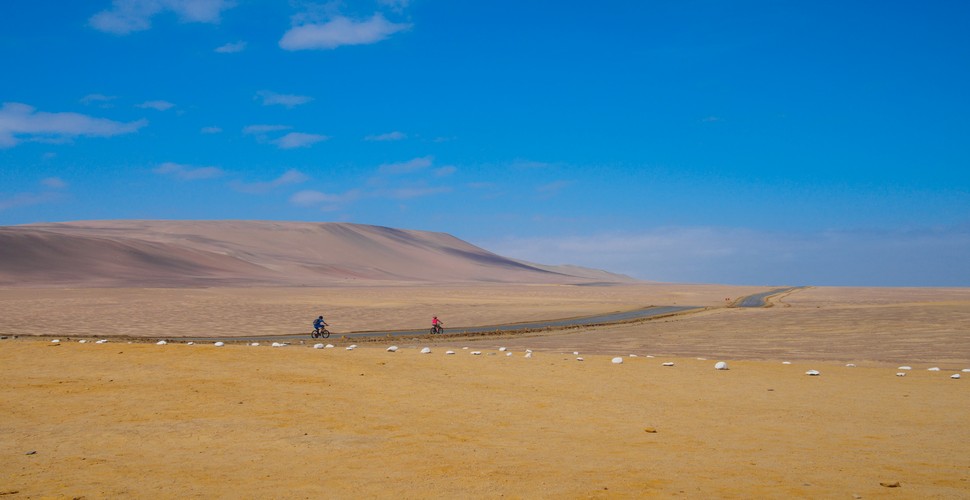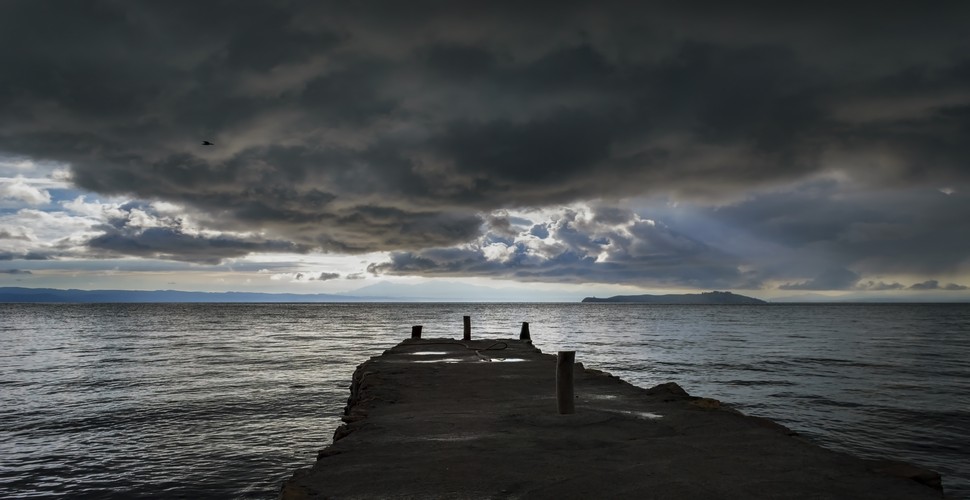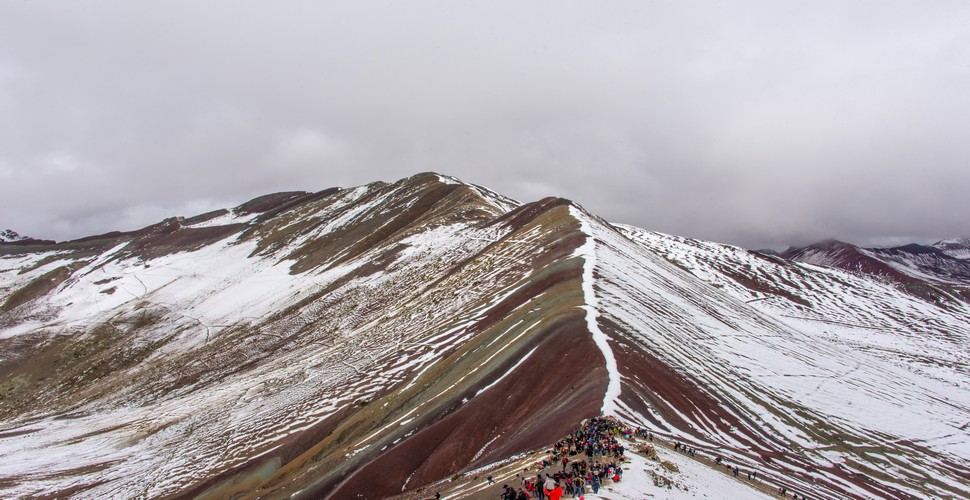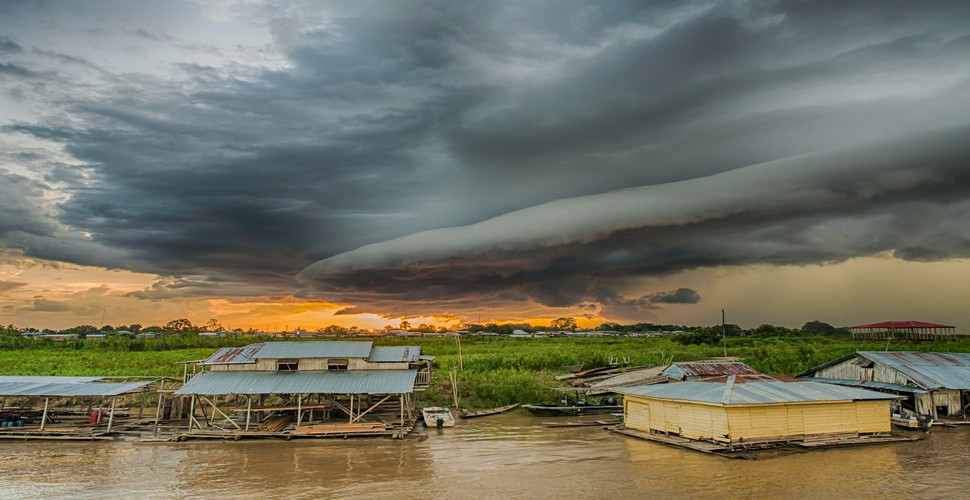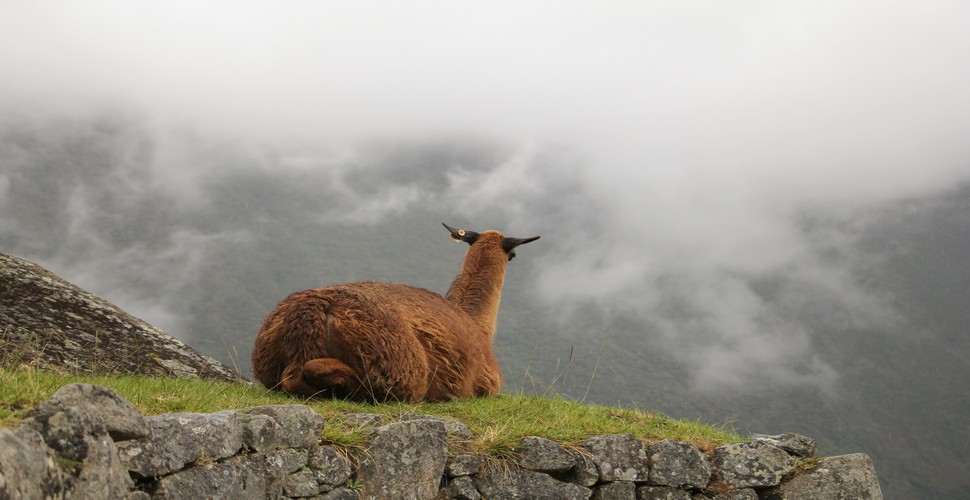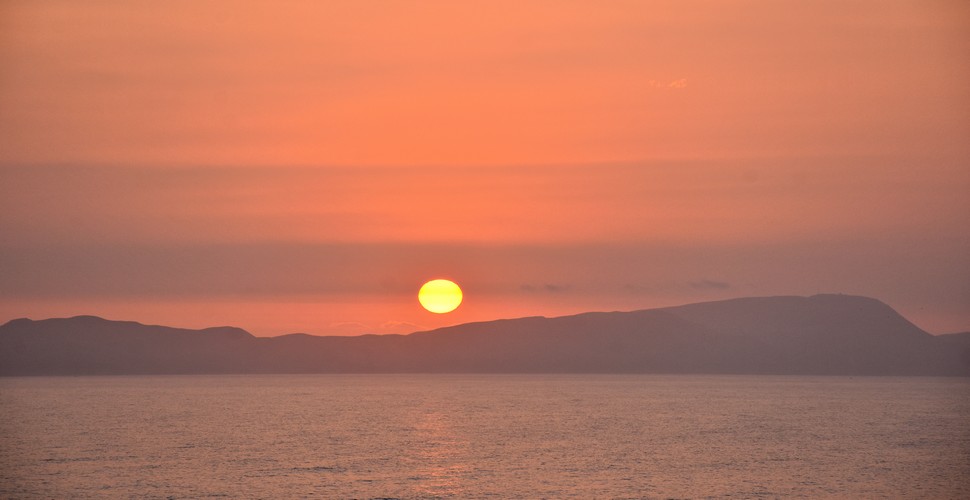

Claire Dean
Travel in South America is a joy to behold. The rich variety of destinations, experiences, landscapes and geography fascinated me so much, that I chose to relocate here, over 20 years ago! The best thing I ever did! Allow me to share my knowledge and passion for Central and South America with you and help you plan your holiday of a lifetime!

THE WONDERS OF PERU: DISCOVER THE BEST TIME TO HEAD OUT ON YOUR ADVENTURE
Written by:Claire Dean
Last Update: 2025-02-22
Peru, a land of ancient mysteries and breathtaking landscapes, beckons to the intrepid traveler with promises of unforgettable experiences. From the mesmerizing heights of Machu Picchu to the Amazon rainforest's lush depths, Peru is a country that offers a kaleidoscope of wonders. To truly make the most of your journey, it's crucial to choose the right time to visit. Let's delve into the seasons and unveil the best time to explore this captivating nation.
Stormy Machu Picchu
Embrace the Dry Conditions of May to September
The Peruvian Andes and Machu Picchu
For those longing to tread the footsteps of the Incas and gaze upon the awe-inspiring Machu Picchu, the dry season from May to September is the ideal time. With less rainfall and clear skies, you'll have uninterrupted views of these ancient ruins set against a backdrop of lush greenery and towering mountains.
Dry Season Machu Picchu
Festivities and Colorful Celebrations
June marks the month of the grand Inti Raymi Festival in Cusco, a celebration of the Incan Sun God, Inti. The city comes alive with vibrant processions, traditional dances, and elaborate costumes, offering an immersive glimpse into Peru's rich cultural heritage.
Inti Raymi
A Dance of Contrasts
Coastal Adventures and the Desert Oasis of Huacachina
If you're drawn to coastal charms and surreal desert landscapes, the period from December to March is your window of opportunity. While the Andean regions might experience some rainfall during these months, the coast showcases warm temperatures and pleasant weather. Explore the vibrant city of Lima, try your hand at surfing along the coast, and experience the magic of the desert oasis, Huacachina.
Huacachina Sunset
Witness the Rainforest in its Glory
For those seeking to immerse themselves in the Amazon rainforest's biodiversity, the dry season from May to November is recommended. With lower water levels, wildlife becomes more visible, and navigating through the jungle becomes easier. However, even during the rainy season (December to April), the rainforest unveils its unique beauty, offering a chance to witness its lushness in all its glory.
Rainbow over The Amazon
Finding Balance
Shoulder Seasons - April and October
If you desire a mix of good weather and fewer crowds, consider the shoulder seasons of April and October. During these months, you can enjoy the benefits of relatively stable weather while avoiding peak tourist numbers. It's an excellent time to explore Peru's diverse landscapes at a more relaxed pace.
October Titicaca
Why Opt For The Optimum Time of Year For Your Peru Adventure
Peru beckons with a magnetic allure, promising a blend of cultural richness, historical significance, and natural beauty. Dive into the mysteries of ancient civilizations, traverse diverse landscapes, and immerse yourself in the vibrant tapestry of Peruvian life. The time of year can directly affect the different regions of Peru, and where is best to visit. Here is some useful information about where to visit at the time of year you wish to travel. A Peru adventure is not merely a trip; it's a transformative experience that will leave an indelible mark on you and unforgettable memories for years to come.
Trekking Cordillera Blanca under Bright Blue Skies
Is a Peru Adventure Worth the Trip All Year Round?
The wonders of Peru unfold at every turn, from the majestic Machu Picchu to the mystical Nazca Lines. Discover the unparalleled joy of exploring Incan ruins, vibrant markets, and charming colonial towns. The cultural immersion, coupled with the stunning scenery, makes a Peru vacation package a priceless experience whichever time of the year you choose to travel. Different regions have different climates at different times of the year. Here is some useful information about the optimum region to travel based on your interests.
Rainbow Over The Amazon
Itinerary Options in Peru Depending on The Time of The Year
Tailor your journey to match your interests and timeframe with the best time of the year to travel to Peru. Whether you opt for a classic Inca Trail trek to Machu Picchu, a cultural exploration through Cusco and the Sacred Valley, or an adrenaline-pumping Amazon rainforest escapade, Peru offers a myriad of itinerary options to suit every adventurer, all year round! Here are some example itineraries:
Classic Inca Trail Adventure in Dry Season (10 Days)
Explore Lima's cultural richness before embarking on the classic Inca Trail during the dry season for optimal trekking conditions.
Best Time to Visit: May to September for the Inca Trail.
Itinerary:
- Days 1-3: Lima exploration
- Days 4-6: Cusco acclimatization and Sacred Valley
- Days 7-9: Inca Trail trek to Machu Picchu
- Day 10: Explore Machu Picchu and return to Cusco
2. Coastal Retreat and Andean Adventure (10 Days)
Enjoy the coastal charm of Lima, followed by an Andean adventure in Huaraz during the dry season.
Best Time to Visit: May to September for Huaraz.
Itinerary:
- Days 1-3: Lima coastal exploration
- Days 4-6: Flight to Huaraz for Andean trekking
- Days 7-10: Return to Lima and departure
3. Amazon Rainforest Exploration in Dry Season (8 Days)
Immerse yourself in the Amazon during the dry season for optimal wildlife spotting and comfortable conditions.
Best Time to Visit: June to September for the Amazon.
Itinerary:
- Days 1-3: Lima exploration
- Days 4-8: Flight to the Amazon, rainforest exploration, and departure
4. Cultural Delights and Mountain Bliss (12 Days)
Experience the cultural gems of Lima and Cusco before venturing into the Andes during the dry season.
Best Time to Visit: Year-round for coastal areas; May to September for the Andean regions.
Itinerary:
- Days 1-4: Lima coastal exploration
- Days 5-8: Cusco and Sacred Valley
- Days 9-12: Andean trekking (considering dry season) and departure
5. Coastal Summer and Cusco Magic (14 Days)
Enjoy the summer warmth of Lima and explore the wonders of Cusco and Machu Picchu during the dry season.
Best Time to Visit: December to March for coastal areas; May to September for Cusco.
Itinerary:
- Days 1-5: Lima coastal exploration
- Days 6-10: Flight to Cusco, Sacred Valley, and Machu Picchu
- Days 11-14: Return to Lima and departure
6: Optimal Rainy Season Retreat (7 Days)
- Day 1-3: Lima Coastal Exploration
Explore Miraflores, visit the Larco Museum, and stroll along the Malecon.
Discover the historic center of Lima and its main attractions.
Explore the artsy district of Barranco. - Day 4-6: Cusco Cultural Exploration
Fly to Cusco, acclimate, and explore cultural sites.
Visit Qorikancha, stroll through San Blas, and explore Sacsayhuaman.
Journey to the Sacred Valley, visiting Awanakancha, Pisac, and Ollantaytambo. - Day 7: Machu Picchu Excursion
Travel to Machu Picchu, exploring the ancient ruins with a guided tour.
Return to Cusco.
Misty Machu Picchu
Peru Trip Difficulty by Season
The difficulty of a trip to Peru can vary by season, considering factors such as weather conditions, trekking challenges, and altitude. Here's a general overview of the difficulty levels in different seasons:
1. Dry Season (May to September):
Difficulty: Moderate to High
Pros: This is the most popular time to visit Peru, offering clear skies and mild temperatures. Trekking conditions, including the Inca Trail, are generally favorable. Machu Picchu is at its most picturesque.
Cons: Popular trails can be crowded, and advance booking is often required. Higher demand for accommodations and tours.
2. Shoulder Seasons (April and October):
Difficulty: Moderate
Pros: These transitional months offer a balance between dry and wet seasons. Trails are less crowded, and weather conditions are generally favorable for trekking.
Cons: There might still be some residual rainfall in April, and temperatures can vary.
3. Wet Season (November to March):
Difficulty: Moderate to High
Pros: Fewer tourists, lower prices, and lush landscapes. Coastal areas experience warmer temperatures.
Cons: Heavy rainfall in the Andean regions can affect trekking conditions, leading to muddy and slippery trails. Some trails, like the Inca Trail, may be closed. The Amazon experiences higher water levels.
Factors Influencing Difficulty:
a. Altitude:
Altitude sickness can affect travelers, especially in high-altitude areas like Cusco and during treks. Adequate acclimatization is crucial, regardless of the season.
b. Trekking Conditions:
The difficulty of trekking trails, such as the Inca Trail, can vary based on weather conditions. Rain can make trails slippery and increase the challenge.
c. Crowds:
Peak tourist seasons, like the dry season, can lead to crowded attractions and higher demand for services, potentially affecting the overall experience.
d. Infrastructure:
Infrastructure and transportation might be affected by weather conditions, impacting the ease of travel, especially in remote areas.
e. Coastal Regions:
Coastal areas, such as Lima, generally experience milder weather throughout the year, with little variation in difficulty.
For those seeking a balance between good weather and fewer crowds, the shoulder seasons can be optimal.
Treks like the Inca Trail are best undertaken during the dry season or shoulder seasons.
Travelers should be prepared for varying weather conditions and potential challenges associated with high altitudes.
Clouds over The Sacred Valley
Trip Advisor Comments
Title: "Magical Moments in the Dry Season"
Comment: "Traveled to Peru in July, and it was everything we hoped for. The dry season meant clear skies, perfect temperatures, and an unforgettable experience trekking to Machu Picchu. If you want the best of Peru, aim for the dry season!"
Title: "Hidden Gems in the Shoulder Season"
Comment: "Visited in October and discovered a quieter side of Peru. The crowds were thinner, and the weather was surprisingly good. A hidden gem! If you prefer a more intimate experience without compromising on weather, consider the shoulder season."
Title: "Rainy Season Beauty"
Comment: "Embarked on a unique adventure during the rainy season in December. Yes, there were occasional showers, but the landscapes were lush and vibrant. Machu Picchu was mystical, shrouded in mist. Perfect for those who appreciate a different kind of beauty."
Title: "Thriving in April's Ambiance"
Comment: "Traveled in April and fell in love with Peru's ambiance. The landscapes were awakening, and the weather was surprisingly pleasant. Not as crowded, and we got a taste of both worlds – a bit of rain and a lot of sunshine. Highly recommend!"
Title: "Dry Season Bliss, June Edition"
Comment: "June was our choice, and it was pure bliss. Sunny days, crisp air, and the perfect conditions for hiking the Inca Trail. If you're planning to tackle the iconic trails and explore Machu Picchu, June is the time. We wouldn't have it any other way."
Title: "Winter Escape to Peru"
Comment: "Escaped winter at home by visiting Peru in January. While the highlands were rainy, the coastal areas like Lima were pleasantly warm. Just pack accordingly for the temperature variations!"
Stormy Sacred Valley
Best Time to Venture to Peru
Timing is key when exploring Peru. Uncover the optimal seasons for your adventure, taking into account weather conditions, crowd levels, and special events. Whether you prefer the vibrant colors of the Andean spring or the tranquility of the offseason, plan your journey well to maximize your experience and the best weather conditions.
Winter in Huaywash
A Solo Expedition to Peru
Venturing into Peru independently is not only feasible but also rewarding. Navigate the logistics of accommodations, transportation, and permits, empowering you to craft a solo adventure tailored to your preferences. Alternatively, allow us to take charge of the trip logistics so you can concentrate on the amazing country that is Peru!
Solo Travel
Considerations about the Best weather in Peru
Before heading out on your Peruvian vacations, consider factors such as the following:
General Weather:
Dry Season (May to September): This is the most popular time for travel to Peru. The weather is generally dry and mild, making it ideal for trekking, including the Inca Trail. It's also a great time for exploring coastal areas like Lima.
Wet Season (November to March): While this period brings lush landscapes and fewer tourists, especially in the Andean regions, heavy rainfall can affect trekking conditions and may lead to trail closures.
Crowds
Dry Season: Peru experiences a peak in tourism during the dry season, particularly from June to August. Machu Picchu and other popular sites can be crowded, and accommodations may be in higher demand.
Shoulder Seasons (April, October): Traveling in these transitional months can provide a balance between good weather and fewer tourists, offering a more relaxed experience.
Trekking Conditions
Dry Season: Optimal for trekking, including the Inca Trail, with clear skies and well-maintained trails.
Wet Season: Trekking conditions may be more challenging due to rainfall, and certain trails may be closed for safety reasons.
Landscape and Scenery
Wet Season: The rainy season brings vibrant, lush landscapes, especially in the Amazon Rainforest. Cloud-covered mountains and mist can add a mystical touch to certain regions.
Dry Season: Clear skies and drier conditions offer stunning views, particularly in high-altitude areas like the Andes.
Wildlife Viewing
Wet Season: The Amazon Rainforest comes to life during the wet season, offering excellent opportunities for wildlife spotting. However, high water levels can disperse animals.
Dry Season: While wildlife is still abundant, the drier conditions may make it easier to spot certain species.
Cultural Festivals
Check for local festivals and events that align with your travel dates. Festivals often showcase traditional culture and add a unique dimension to your experience.
Personal Preferences: Consider your tolerance for crowds, your preferred activities (trekking, cultural exploration, relaxation), and your ability to adapt to different weather conditions.
Tornado over The Altiplano
Getting to the Destination and Travel in Peru During Each Season
Navigate the logistics of reaching Peru seamlessly.
By Air:
Dry Season (May to September): This is the peak tourist season, and airlines typically operate regular flights to major airports in Peru, including Lima, Cusco, and Arequipa. Consider booking flights well in advance to secure the best prices and availability.
Wet Season (November to March): Flights are still available, but weather conditions might affect schedules, especially in regions prone to heavy rainfall. Keep an eye on weather forecasts and potential flight disruptions.
2. By Land:
Dry Season: Traveling by bus or car is a viable option, especially for shorter distances within Peru. Roads are generally in good condition, and land travel can provide scenic views of the landscape.
Wet Season: While roads may still be accessible, heavy rainfall can lead to landslides and road closures, particularly in mountainous regions. It's essential to check road conditions before embarking on long journeys.
3. By Train:
Dry Season: Train services, especially those leading to popular destinations like Machu Picchu, operate regularly. The dry season is an excellent time to enjoy scenic train journeys.
Wet Season: Train services may still be available, but it's advisable to check schedules and potential disruptions due to weather conditions, especially if traveling to areas prone to heavy rainfall.
4. By Cruise (Amazon Region):
Dry Season: Cruises on the Amazon River are popular during the dry season when water levels are lower. Cruise operators may offer various itineraries to explore the rainforest.
Wet Season: While some cruises still operate, higher water levels may allow access to different areas of the Amazon. Be sure to check cruise schedules and itineraries.
5. Traveling Within Peru:
Domestic Flights: Peru has a well-developed domestic flight network connecting major cities and tourist destinations. Domestic flights are available year-round, but schedule changes might occur during adverse weather conditions.
Bus Travel: Long-distance and local buses operate throughout the year. However, landslides and road closures can impact bus travel in mountainous regions during the wet season.
Train Travel: Train services, especially those serving tourist destinations, generally operate year-round, but schedules might be adjusted during the wet season.
Truck Through a Snowy Andes
Essential Packing List depending on the Time of Year
Dry Season (May to September):
Clothing:
-
Lightweight, moisture-wicking clothing for daytime.
-
Long-sleeved shirts and pants to protect against the sun.
-
Light jacket or sweater for cooler evenings.
-
Comfortable walking shoes or hiking boots for trekking.
-
Hat, sunglasses, and sunscreen for sun protection.
Rain Gear:
-
While the dry season is generally rain-free, it's always wise to pack a compact rain jacket or poncho, especially for higher altitudes.
Miscellaneous:
-
Daypack for excursions.
-
Camera and binoculars for capturing scenic views and wildlife.
-
Power adapter and portable charger.
-
Personal hygiene items and toiletries.
-
Medications and a basic first aid kit.
-
Reusable water bottle to stay hydrated.
-
Travel guidebook and maps.
Wet Season (November to March)
Clothing:
-
Waterproof and breathable jacket.
-
Quick-drying, moisture-wicking clothing.
-
Waterproof hiking boots for muddy conditions.
-
Umbrella or a quality rain poncho.
-
Layers for both warmth and protection against rain.
Rain Gear:
- Consider packing a rain cover for your backpack or daypack.
- Waterproof bag or pouch for electronics and important documents.
Miscellaneous:
-
Insect repellent for areas with higher humidity.
-
Waterproof bags for protecting electronics and documents.
-
Waterproof or quick-dry travel towel.
-
Extra plastic bags for wet or muddy items.
Shoulder Seasons (April and October):
Clothing:
-
A mix of lightweight and warmer clothing for varied temperatures.
-
Waterproof jacket for potential rain showers.
-
Comfortable walking shoes or boots.
-
Hat and sunglasses for sun protection.
Miscellaneous:
-
A mix of essentials from both the dry and wet season lists.
-
Snacks for energy during excursions.
-
Small, collapsible backpack for day trips.
-
Additional Items for High Altitudes (Cusco, Machu Picchu, etc.):
-
Altitude sickness medication or remedies.
-
Adequate water intake to prevent dehydration.
-
Coca tea or candies for altitude adjustment.
-
Layers for temperature variations at higher elevations.
Cycling Through Paracas
How to Prepare for Your Peru Trip Depending on The Season
-
Check Visa Requirements: Confirm the visa requirements for your nationality to enter Peru.
-
Health Precautions: Consult with a healthcare professional for recommended vaccinations.
-
Consider obtaining travel insurance to cover potential health-related issues.
-
Weather Research: Research the weather conditions for the specific time of year you plan to visit each region.
Cultural and Local Insights:
-
Learn Basic Phrases: Familiarize yourself with a few basic phrases in Spanish to facilitate communication.
-
Research Local Customs: Learn about local customs and cultural norms to respect and engage with the local population.
-
Festivals and Events: Check for any local festivals or events happening during your visit. Attending can offer unique cultural experiences.
Altitude Preparation:
-
Altitude Sickness: Understand the symptoms of altitude sickness and take necessary precautions.
-
Consider bringing medications or natural remedies to alleviate altitude-related discomfort.
-
Hydration: Stay well-hydrated, especially when at higher altitudes.
Money and Logistics:
-
Inform Your Bank: Inform your bank about your travel dates to avoid any issues with your credit/debit cards.
-
Cash and Cards: Carry a mix of cash and cards, as some places may not accept cards.
-
Communication:
-
Mobile and Internet: Check your mobile phone plan for international coverage. Consider purchasing a local SIM card for better connectivity.
-
Emergency Contacts: Have a list of emergency contacts, including local embassy information.
Safety Precautions:
-
Valuables: Safeguard your valuables by using a money belt or concealed pouch.
-
Be cautious with displaying expensive items in public.
-
Emergency Kit: Assemble a basic emergency kit with essential medications and first aid supplies.
Final Preparations:
-
Photocopies of Documents: Make photocopies of important documents such as your passport, ID, and travel insurance.
-
Pack Smart: Pack light and consider the specific activities you'll be doing at each destination.
-
Pack a versatile wardrobe suitable for changing weather conditions.
-
Power Adapter: Bring a power adapter suitable for the electrical outlets in Peru.
-
Local Transportation: Familiarize yourself with local transportation options and schedules.
Cloudy Skies Over Titicaca
Altitude Sickness Tips
Peru's high-altitude regions pose unique challenges.
1. Acclimatization:
Gradual Ascent: Allow your body time to acclimate by gradually ascending to higher altitudes. Spend a day or two at a moderate altitude before reaching higher elevations.
Take It Easy: Avoid strenuous activities during the first day at high altitude. Allow your body time to adjust to the low oxygen levels.
2. Stay Hydrated oxygen levels.
Drink Plenty of Water: Hydration is key at high altitudes. Drink more water than usual to combat dehydration caused by increased respiratory and urinary water losses.
3. Diet:
Eat Light: Consume light and easily digestible meals. Heavy or rich foods can contribute to feelings of nausea.
Carbohydrates: Include carbohydrates in your diet, which can help in adapting to high altitudes.
4. Avoid Alcohol and Caffeine:
Limit Consumption: Alcohol and caffeine can contribute to dehydration. Limit your intake, especially during the first few days at high altitude.
5. Medications:
Consult a Healthcare Professional: Speak with a healthcare professional before your trip to discuss and obtain medications for altitude sickness.
Acetazolamide (Diamox): This prescription medication can help prevent and alleviate symptoms of altitude sickness. Discuss its use with your healthcare provider.
6. Coca Tea or Candies:
Mild Stimulant: Coca tea is a traditional remedy in the Andes. While its effectiveness is debated, it's considered a mild stimulant that may help with altitude symptoms.
7. Rest and Sleep:
Adequate Rest: Ensure you get enough rest and sleep during your journey. Fatigue can exacerbate symptoms of altitude sickness.
8. Symptoms Monitoring:
Be Aware: Familiarize yourself with the symptoms of altitude sickness, including headache, dizziness, nausea, and shortness of breath.
Report Severe Symptoms: If you experience severe symptoms, descend to a lower altitude and seek medical attention.
9. Oxygen:
Supplemental Oxygen: In severe cases, supplemental oxygen may be administered. Some hotels in high-altitude areas offer oxygen supplementation for guests.
10. Local Remedies:
Chew Coca Leaves: Chewing coca leaves is a common practice in the Andes. While its efficacy is debated, some find it helpful in alleviating mild symptoms.
11. Physical Fitness:
Pre-trip Exercise: Improve your physical fitness before the trip. Regular exercise can enhance your body's ability to cope with reduced oxygen levels.
12. Altitude Chamber (Gamow Bag):
Emergency Use: In remote trekking areas, carrying a portable hyperbaric chamber known as a Gamow bag may be considered for emergency treatment.
Snowy Rainbow Mountain
Pro Tips for the Journey to Peru
Dry Season (May to September):
Book In Advance:
During the dry season, especially in June to August, popular attractions like Machu Picchu can get crowded. Book tickets for tours and accommodations in advance to secure your preferred dates.
Early Morning Visits:
Plan to visit major attractions, such as Machu Picchu, early in the morning to avoid crowds and experience these sites in a more serene atmosphere.
Layer Clothing:
While daytime temperatures are warm, evenings can be cool. Pack layers to stay comfortable throughout the day.
Explore Coastal Areas:
Take advantage of the dry weather to explore coastal cities like Lima. Enjoy the beaches, seafood, and vibrant cultural scenes.
Wet Season (November to March):
Flexible Itinerary:
Be prepared for changes in your itinerary due to potential trail closures or disruptions caused by heavy rainfall. Flexibility is key during the wet season.
Rain Gear:
Pack high-quality rain gear, including a waterproof jacket, pants, and sturdy waterproof boots. This is crucial for trekking and outdoor activities.
Enjoy Lush Landscapes:
Embrace the beauty of the lush landscapes during the wet season. The rain transforms the surroundings into vibrant greenery.
Visit the Amazon:
Consider exploring the Amazon Rainforest during the wet season when water levels are higher, allowing for unique wildlife viewing opportunities.
Shoulder Seasons (April and October):
Quieter Attractions:
Take advantage of the shoulder seasons for a more tranquil experience at popular attractions. April and October offer a balance between fewer tourists and relatively favorable weather.
Varied Clothing:
Pack a mix of clothing for varied temperatures. Mornings and evenings might be cooler, while daytime can be warm.
Local Festivals:
Check for local festivals happening in April or October. Participating in these events can provide insights into Peruvian culture.
General Pro Tips:
Stay Hydrated:
Regardless of the season, stay hydrated, especially at higher altitudes. Drink plenty of water and avoid excessive alcohol and caffeine consumption.
Cash and Cards:
Have a mix of cash and cards. While larger cities accept cards, smaller towns and markets may prefer cash.
Travel Insurance:
Invest in comprehensive travel insurance that covers potential trip disruptions, including cancellations due to weather.
Local Cuisine:
Explore local cuisine. Try ceviche in coastal areas, alpaca dishes in the Andes, and Amazonian specialties in the rainforest.
Learn Basic Spanish:
Learn a few basic Spanish phrases. While English is spoken in tourist areas, speaking some Spanish can enhance your experience.
Local Guides:
Consider hiring local guides for a more immersive experience. They can provide insights into culture, history, and hidden gems.
Altitude Awareness:
Be mindful of altitude, especially in high-altitude destinations. Allow time for acclimatization and be aware of symptoms of altitude sickness.
Thunder Clouds over The Amazon
Cost Breakdown of a trip to Peru
1. Flights:
Round-trip International Flights: $600 - $1,500 (varies based on departure location and time of booking).
2. Accommodation:
Budget Accommodation: $20 - $60 per night
Mid-range Hotels: $60 - $150 per night
Luxury Hotels: $150 and above per night
3. Transportation:
Domestic Flights: $50 - $150 per segment (if applicable)
Long-Distance Buses: $10 - $50 per journey
Local Transportation: $1 - $5 per trip
4. Tours and Activities:
Machu Picchu Tour: $50 - $150 (varies based on the type of tour)
Other Excursions and Tours: $20 - $100 per activity
5. Food:
Street Food/Local Eateries: $5 - $10 per meal
Mid-range Restaurants: $15 - $30 per person
Fine Dining: $30 and above per person
6. Miscellaneous:
Entrance Fees to Attractions: Varies (e.g., Machu Picchu entrance fee is around $60 - $75)
Shopping and Souvenirs: Varies based on personal spending
7. Travel Insurance:
Comprehensive Travel Insurance: $50 - $200 (varies based on coverage and duration)
Llama Contemplating the Clouds
FAQs:
1. When is the best time to visit Peru?
Answer: The best time to visit Peru depends on your preferences. The dry season (May to September) is popular for trekking, while the wet season (November to March) offers lush landscapes. Shoulder seasons (April and October) provide a balance.
2. What is the weather like during the dry season in Peru?
Answer: The dry season is characterized by mild temperatures and little to no rainfall. Days are generally sunny, making it ideal for outdoor activities and trekking.
3. Can I visit Machu Picchu during the wet season?
Answer: Yes, you can visit Machu Picchu during the wet season. However, be prepared for rain, and trails may be muddy. Machu Picchu remains open, and the lush landscapes add a unique charm.
4. Are there any advantages to traveling during the wet season?
Answer: Traveling during the wet season offers fewer crowds, lush landscapes, and potentially lower prices. It's a great time for exploring the Amazon Rainforest.
5. Is it safe to trek during the wet season in Peru?
Answer: Trekking during the wet season can be challenging due to muddy trails and rain. Some treks, like the Inca Trail, have restrictions. It's crucial to be well-prepared and choose suitable trails.
6. What are the advantages of visiting in the shoulder seasons?
Answer: Shoulder seasons (April and October) offer a balance between good weather and fewer tourists. You can enjoy pleasant temperatures, and popular attractions are less crowded.
7. Is altitude sickness a concern in Peru?
Answer: Yes, altitude sickness can be a concern, especially in high-altitude destinations like Cusco and Machu Picchu. Acclimatization, proper hydration, and medication if necessary are important.
8. Can I still enjoy outdoor activities during the wet season?
Answer: Yes, you can still enjoy outdoor activities during the wet season. Just be prepared with proper rain gear, and some activities, like exploring the Amazon, maybe even more rewarding.
9. What festivals or events take place in Peru during different seasons?
Answer: Various festivals take place throughout the year. Inti Raymi in June is a significant Inca festival, and local events and celebrations may coincide with your visit.
10. Are there specific regions in Peru that are better to visit during certain seasons?
Answer: Yes, the coastal regions are enjoyable year-round, while high-altitude destinations are best visited in the dry season. The Amazon is accessible throughout the year but experiences higher water levels during the wet season.
11. What wildlife can I see in Peru during the wet season?
Answer: The wet season in the Amazon Rainforest is ideal for wildlife spotting. You may encounter vibrant bird species, monkeys, and other unique creatures amidst the lush vegetation.
12. Is it necessary to book tours and accommodations in advance?
Answer: Booking in advance is advisable, especially during the peak dry season. For popular attractions like Machu Picchu, securing tickets and accommodations early ensures availability.
Sunset Over San Lorenzo, Lima
Unleash the explorer within and uncover the wonders of Peru. This guide equips you with the knowledge about the best time to travel to Peru and the inspiration needed to turn your Peruvian dreams into an enriching reality. Embrace the magic, conquer the challenges, and let the marvels of Peru leave an indelible mark on your travel repertoire. Peru is a destination that promises unparalleled experiences regardless of the time you choose to visit. Each season brings its own magic, whether it's the dry months allowing you to explore ancient ruins and the highlands, the vibrant festivals showcasing the country's cultural richness, or the diverse landscapes waiting to be explored. The best time to go to Peru ultimately depends on your preferences and the kind of adventure you're seeking. So, pack your bags and get ready to embark on a journey that will leave you forever enchanted by the wonders of Peru. Find out more here!


